5 Ways to Get a Free Week’s Stay in Croatia's Dream Destinations
February 24th, 2022 - If you happen to love spending time outdoors and have a few days to spare this spring or summer, Croatia’s national and nature parks offer amazing volunteering opportunities that involve a free week’s stay in some of the most spectacular locations in the country
We prepared a selection of five attractive volunteer programmes that are 5-10 days long and require up to 6 hours of work a day, with free accommodation, meals and transportation provided to participants. English speakers are encouraged to apply, as knowledge of Croatian isn’t a requirement for any of the following roles:
1. Dry Stone Restorer in Mljet National Park
Become a guardian of the past by restoring ancient dry stone walls in Mljet National Park. Traditional dry stone construction is inscribed in the list of intangible cultural assets of the Republic of Croatia, which means you’d literally help restore and preserve precious cultural heritage on Mljet island!
Volunteers will learn how to build and fix up walls, stairways and other dry stone structures. The job also involves clearing existing dry stone structures of vegetation, simple processing of stone using hand tools, and photographing dry stone walls before and after restoration.
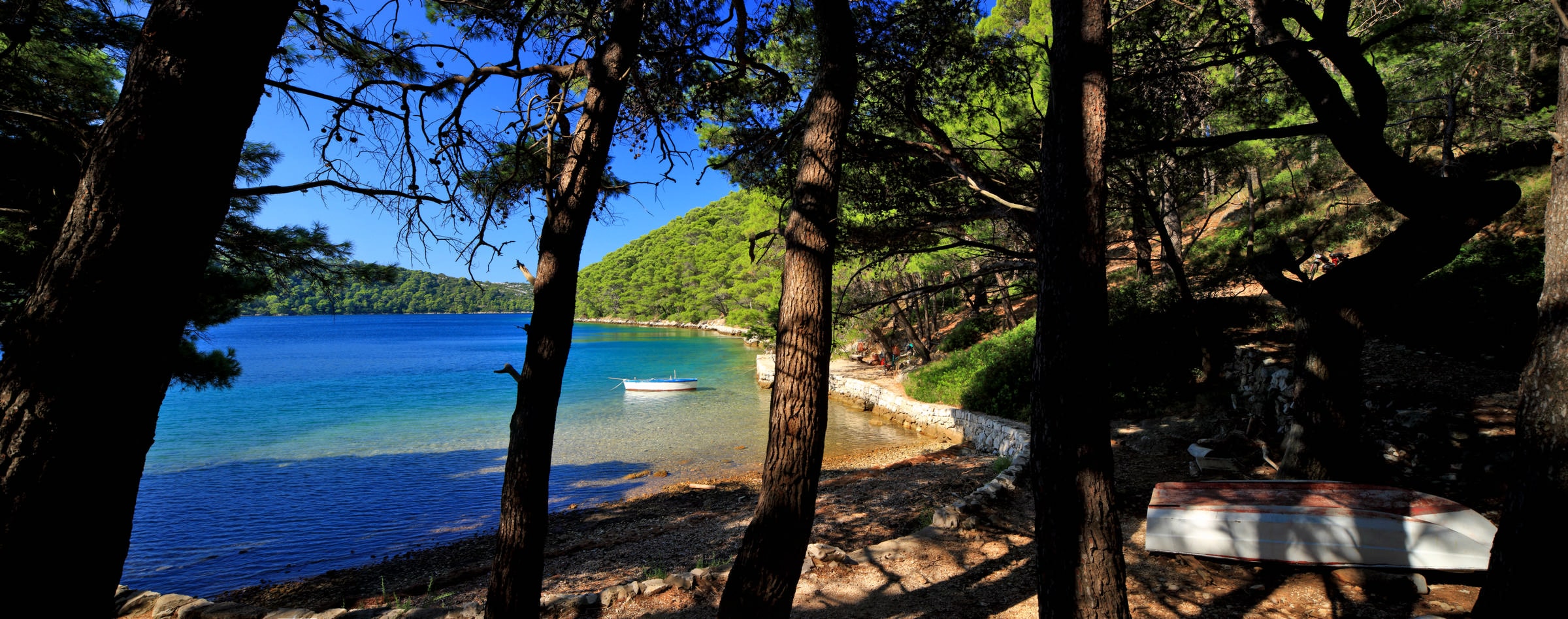 Mljet island / Photo © Mario Romulic
Mljet island / Photo © Mario Romulic
The programme takes place in April and is seven days long, including six days of work and one day off. Volunteers are expected to work six hours a day with a one-hour break, but considering that the physical work involved in this particular programme can be strenuous, the number or working hours can be reduced if needed.
All necessary tools will be provided by the Park. Accommodation is provided free of charge on Mljet island in the Collier building owned by the Park, which has seven rooms equipped with bunk beds, toilets, showers, a kitchen and a living room. Meals are also provided free of charge, with the Park delivering groceries to volunteers or providing free meals at the local hotel.
If stonemasonry isn’t your cup of tea and you’d prefer a less hands-on kind of creative work, may we suggest another volunteer programme on Mljet island:
2. Photo Amateur in Mljet National Park
A dream come true for anyone who loves island hopping and snapping pics of stunning landscapes (don’t we all?), this programme involves photographing the scenery and events in Mljet National Park in the period between April and June.
Depending on the time of year, volunteers will be required to photograph various locations, events and activities on Mljet island using their own gear. You’ll be capturing the island’s flora and fauna, cultural monuments and landmarks, historic sites, enchanting landscapes and fun summer events.
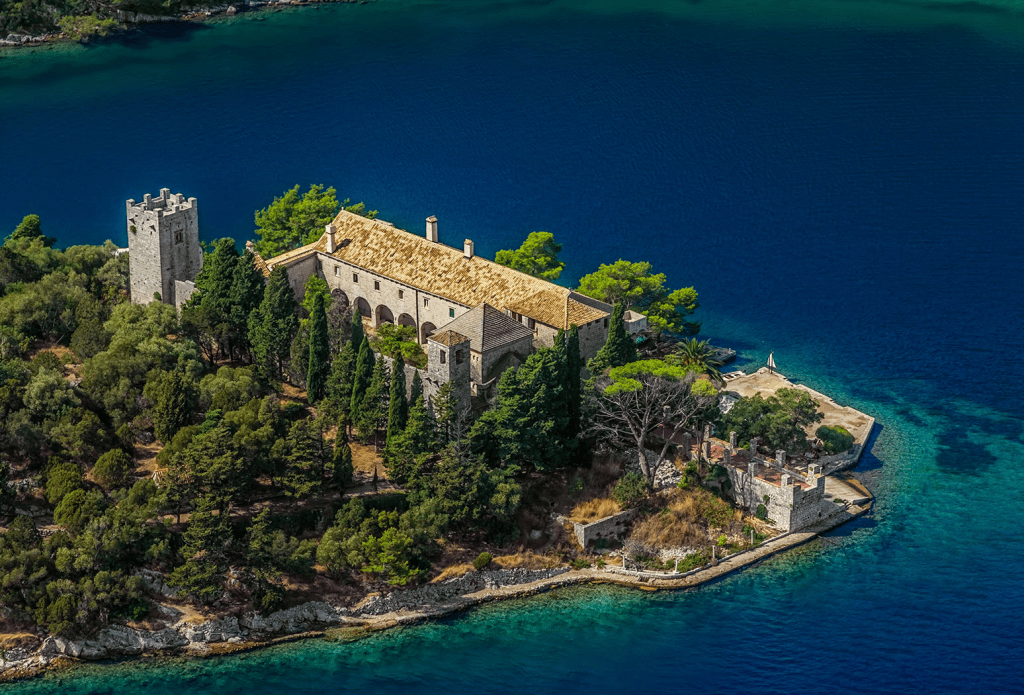 Mljet National Park / Photo: volonteri.parkovihrvatske.hr
Mljet National Park / Photo: volonteri.parkovihrvatske.hr
Those who choose to participate in this particular programme will sign a statement of the assignment of the photos to Mljet National Park. You’ll have to submit the photos shortly after the programme is over, and can look forward to seeing them featured in the Park’s publications in Croatia and abroad.
A minimum of one DSLR camera with a lens is required to partake in this programme.
You’ll have plenty of time to explore the island on your own time, and there’s no shortage of things to do: there are over 40 kilometres of hiking and cycling trails, you can rent a kayak or canoe to explore the saltwater lakes on Mljet, or take diving lessons with a certified instructor.
For all Mljet-based programmes, volunteers are to bear the cost of travel to Mljet island, and the Park will provide transport from the ferry port on Mljet to the place of accommodation.
3. Gull Catcher in Kornati National Park
Are you a fan of the great outdoors and love being in close contact with wildlife? Consider becoming a seagull catcher in Kornati National Park. Don't worry, you'll be releasing them too!
You’ll be joining the Park’s experts as they band and monitor Caspian gulls in the stunning Kornati archipelago, specifically on a few islands where seagulls are known to nest.
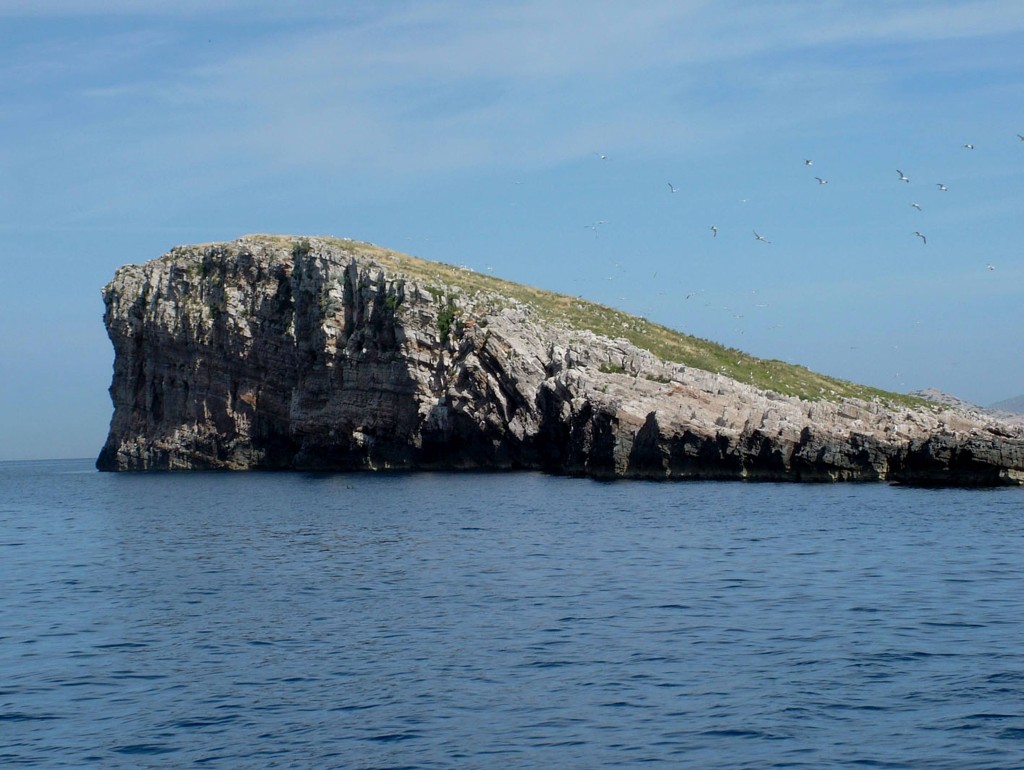 Kornati National Park / Photo: volonteri.parkovihrvatske.hr
Kornati National Park / Photo: volonteri.parkovihrvatske.hr
Do you dare to catch a young gull with your bare hands? If you do, you get to name the bird and take notes as it gets banded by a qualified employee of the Park. Banding and monitoring allows experts to track the behaviour and habitats of seagulls in order to collect data used to ensure protection of the species.
Volunteers will receive training prior to starting work and will be supervised by the Park staff. The programme takes place in May and June lasts about ten days, with volunteers expected to work seven hours a day.
Accommodation is provided and free, and in this case, it’s pretty amazing: you’ll be staying on a sailboat owned by the National Park Kornati, fully furnished and featuring 3 cabins, 6 beds, a living room, kitchen and toilet.
 Kornati National Park / Photo © Mario Romulic
Kornati National Park / Photo © Mario Romulic
Groceries are provided free of charge, and volunteers can either prepare meals on their own or seek the help of the volunteer manager.
Volunteers have to arrange transportation to Murter island, while further transport from Murter and within the Park area is organised by the Park and free of charge.
4. Traditional Gardener in Lonjsko Polje Nature Park
Lonjsko Polje (Lonja Field) is the largest protected wetland in Croatia, located approximately 70 km south-east of Zagreb.
If you have a green thumb and don’t mind getting your hands dirty, you’d be a great fit for a traditional gardener in Lonjsko Polje Nature Park. You’d help clean up the untended plots in the Park and plant new seedlings around traditional wooden houses in the villages of Krapje and Čigoč - think of it as traditional landscape design!
 Lonjsko Polje Nature Park / Photo © Mario Romulic
Lonjsko Polje Nature Park / Photo © Mario Romulic
The programme takes place in April and lasts five days, six hours of work each.
Accommodation is provided free of charge in a dormitory in Krapje. The facility is equipped with a small kitchen and a bathroom, and has central heating. As volunteers will be sleeping on spare beds, they are required to bring their own sleeping bags. Groceries are provided free of charge, and bikes and vehicles are available to use for transportation within the Park.
5. Guardian of Plant Biodiversity in Brijuni National Park
There’s not much need for gardening on Brijuni islands - domestic wildlife and imported species such as mountain zebras and mouflons take care of landscaping by nibbling away at the grass at all times.
There’s a single item on the menu that the animals don’t like: a spiky flower called Spanish oyster thistle. Since the wildlife practically mows the lawn, it removes all natural obstacles that would prevent the spread of the Spanish oyster thistle, allowing it to take over whole areas that would otherwise be home to other plants.
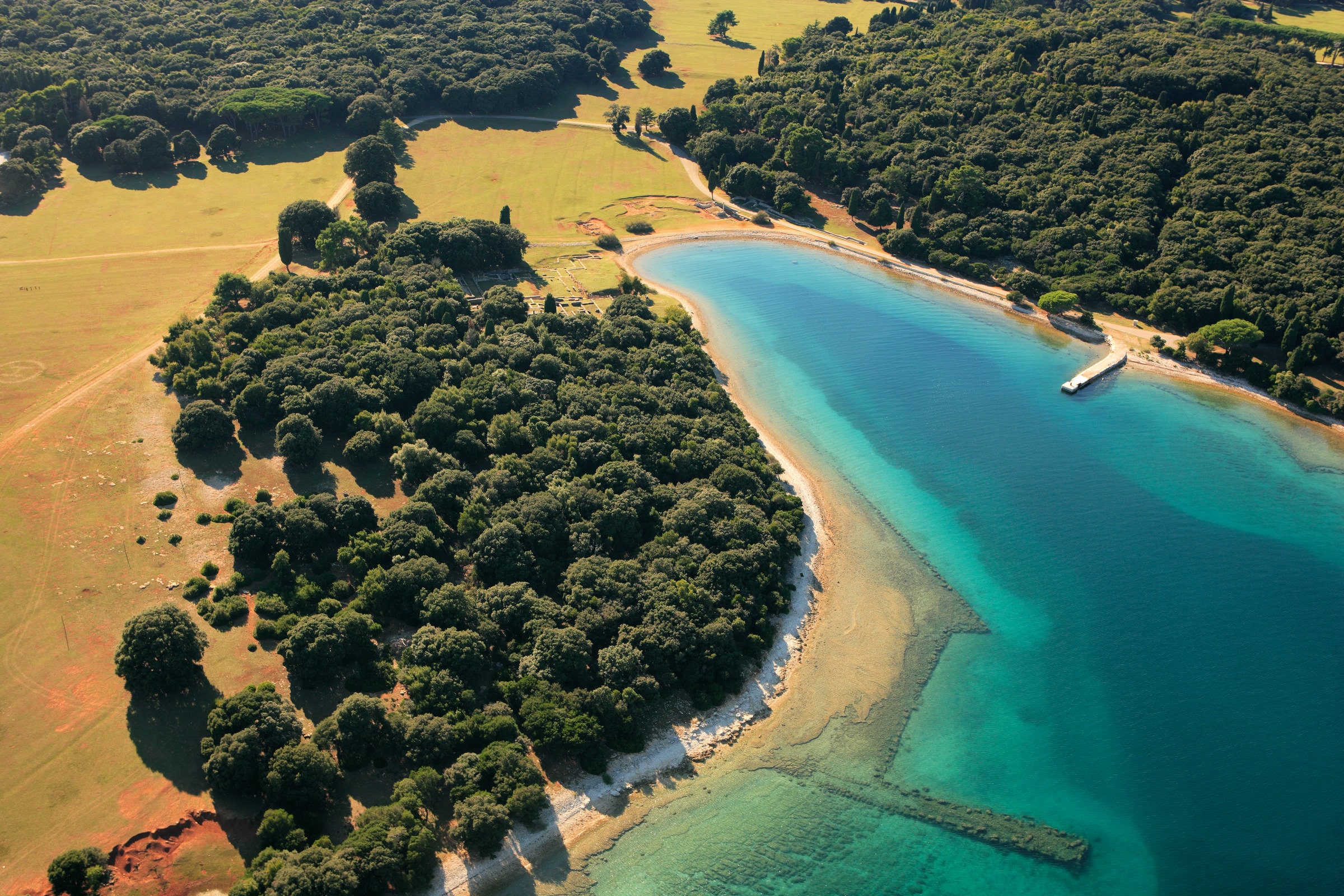 Brijuni islands / Photo © Mario Romulic
Brijuni islands / Photo © Mario Romulic
As a volunteer, you’ll help maintain the biodiversity on the meadows of Veliki Brijun island by keeping the pesky thistle in check. You’ll be removing the aggressive plant using provided gardening tools.
Volunteers are needed in the month of May and are required to put in 6 hours of work daily. Beyond that, the islands are yours to enjoy: explore the Safari and Ethno Parks, rent golf equipment and play on the golf course opened in 1922, or go for a swim at one of Brijuni’s pristine beaches.
The Brijuni are also a nice jumping off point for trips in Istria. Discover the ancient Roman monuments in Pula which is located only 7km away from Fažana, or visit the picture-perfect city of Rovinj.
 Wildlife on Brijuni islands / Photo © Mario Romulic
Wildlife on Brijuni islands / Photo © Mario Romulic
Accommodation is provided in one of the apartment buildings on Veliki Brijun island that are owned by the Park. Apartments are equipped with toilets, bathrooms, and a kitchen; rooms are shared with one or two other volunteers.
Groceries are provided free of charge and delivered to the apartment building, and one meal a day is also provided free of charge in the workers’ restaurant.
Volunteers have to arrange transport to Fažana town, and boat transportation to and from Veliki Brijun island is organised by the Park free of charge for the duration of the volunteer programme.
***
Applicants who don’t speak Croatian must be able to speak English in order to communicate with the park authorities and volunteer coordinators.
You can find more information about these and other volunteer programmes on the website Volunteer in Parks of Croatia.
Looking to apply? Fill out this form (in English), pick a programme you like and specify when you're free to participate, and the relevant programme coordinators will get back to you.
Please note that some of the programmes might not be accepting applications for the time being, or might be otherwise affected by epidemiological measures.
Check out our comprehensive Guide to the Nature and National Parks of Croatia.
After 18 Projects Worth 50 Million Kuna, Brijuni E-Mobility to Come Next
January the 9th, 2022 - Is Brijuni e-mobility next on the agenda for this stunning national park? As environmental care is continually put in first place, it seems so.
As Poslovni Dnevnik/Suzana Varosanec writes, the director of the Fund for Environmental Protection and Energy Efficiency, Sinisa Kukic, recently signed an agreement with the director of the Brijuni National Park, Marno Milotic, on co-financing electric tourist vehicles worth a massive 1.9 million kuna. As part of this praiseworthy Brijuni e-mobility project, the Fund will co-finance twenty electric vehicles intended for rent for Brijuni, and a further four intended for the transport of guests, with a total value of over three million kuna.
The Fund for Environmental Protection and Energy Efficiency and Brijuni National Park are continuing their close cooperation, which has so far resulted in the implementation of 18 projects worth over 50 million kuna in total, through this new project aimed at introducing a Brijuni e-mobility system.
These are the agreements concluded over recent days by the representatives of the two sides, the director of the Fund for Environmental Protection and Energy Efficiency, Sinisa Kukic, and the director of the Brijuni National Park, Marno Milotic. According to Kukic, Brijuni e-mobility will come in handy as e-mobility is already a highly placed strategic goal of the European Union (EU), especially in areas that are oases of biodiversity, such as national parks, which Croatia has many of.
"We're glad that tourism on the Brijuni islands is really being considered in terms of sustainability and we'll be more than happy to continue to be available for all quality ideas that will contribute to the goals of environmental protection and energy efficiency," said Kukic.
Considering the Green Plan and the climate and energy policy of the Republic of Croatia, it can be expected that all activities that contribute to sustainability and green infrastructure will continue to be encouraged and likely financed, which will be accompanied by the Fund's new co-financing programmes.
Milotic also confirmed that sustainability must be a priority in the management of national parks, emphasising that the purchase of new electric vehicles will enrich the tourist offer of the island, and also preserve its beauty and biodiversity. As he said, that was their goal and the implementation of an EU Brijuni project, where they also achieved excellent cooperation with the Fund, saying: "This will continue to be our goal"
It's worth noting that the aforementioned Brijuni EU project (Novo ruho Brijuna) is one of the projects regarding national parks and nature parks that was successfully nominated for the tender of the Ministry of Regional Development and EU funds called "Promoting the sustainable use of natural heritage in national parks and nature parks".
For more, check out our dedicated lifestyle section.
Brijuni National Park Becomes Blue Park for Marine Conservation and Management
December 10, 2021 - The Institute for Marine Conservation has awarded Brijuni National Park the Blue Park gold award for achieving the highest science-based standards of marine conservation and management, joining Brijuni to a growing network of 21 Blue Park areas around the world designed to protect and regenerate ocean biodiversity.
The Institute of Marine Conservation designed the Blue Park Awards to encourage governments to protect the marine world, preserve critical habitats, promote resilience to climate change, and preserve the beauty of our oceans for future generations. The program's goal is to establish an effective network that protects and maintains the marine world and habitats globally. Today, there are 21 protected marine areas with Blue Park status granted, reports HRTurizam.
"It is a great honor to receive the Blue Park Award, which focuses on ZMPs [marine protected areas], recognizes their results “on land” and encourages even greater efficiency in conserving the ocean. This award is dedicated to our employees, communities, partners and stakeholders who enable positive change," said the Acting Director of the Brijuni National Park Marno Milotić.
Dr. Lance Morgan, president of the Marine Conservation Institute, said they are happy to see new areas marked Blue Park that will help speed up the protection of the most critical regions of our oceans. Brijuni National Park is a perfect example of an important and biologically diverse protection area, mainly because it contributes to resilience to climate change and protects several endangered species of turtles, marine mammals and important birds, added Morgan.
With a long tradition of a particular area for conserving biological diversity, Brijuni is an essential and significant area for the Community within the Natura 2000 network.
Brijuni's healthy ecosystems contain a rich marine world managed and supervised by numerous professional staff and their partners. Therefore, the strategy of sustainable financing of ZMPs is essential. As one of the few ZMPs financially independent, Brijuni raises significant funds to implement nature conservation measures from visitor fees, tourism activities, and visitor services.
"I am looking forward to sharing the story of this great new area with Blue Park status in cooperation with the managers who take care of Brijuni. I hope it becomes a model for other ZMPs around the world," said Dr. Sarah Hameed, senior scientist and director of the Blue Parks program.
Brijuni National Park protects essential seagrass ecosystems, including one of the most extensive Posidonia meadows on the West Coast of Istria, an endemic seaweed species. Seagrass meadows support a high level of diversity of the marine world by providing food, shelter and habitats for many species of fish and invertebrates.
Migratory species listed by the International Union for Conservation of Nature (IUCN) Red List, including loggerhead turtles, bottlenose dolphins and numerous birds, visit the area and use its rich resources. Seagrass meadows can prevent ocean acidification and sequester large amounts of carbon, thus contributing to resilience to climate change.
To read more about lifestyle in Croatia, follow TCN's dedicated page.
Dinosaur Fossils in Croatia and their Locations Declared Protected Part of Nature
April 21, 2021 – A total of 24 dinosaur fossils in Croatia have been declared a protected part of nature, making them the first protected fossil in Croatia.
As Glas Istre reports, the decision to declare dinosaurs and their locations as protected parts of nature were published in the Official Gazette on April 15 and comes into force eight days after its publication, on April 24.
With this proclamation, dinosaur fossils became the first protected fossil in Croatia, significant for their rarity, size, appearance, educational, and scientific significance. Each newly discovered dinosaur fossil and its location will be declared a protected part of nature under the Nature Protection Act.
Brijuni – the first location
The first find in Croatia's territory originates from Brijuni, dating from 1925 when A. Bachofen – Echt spotted traces of dinosaurs on Cape Ploče on Veliki Brijun. Another location in Croatia was also discovered on Veliki Brijun in 1965 on Cape Barban. Today, there is a Dinosaur Park available to the public and a sculpture of theropod dinosaur.
The third site is at Plješivac/Kamik, where fossils were discovered in 1987, and the fourth is at Trstike/Debela Glava, with a site from 2001.
More than 200 dinosaur footprints were found at four sites in Veliki Brijun, which inhabited the area of the future Brijuni Islands in the Mesozoic period. Within this broad period, the Brijuni dinosaur can be placed in the Cretaceous period (145 to 65 million years ago).
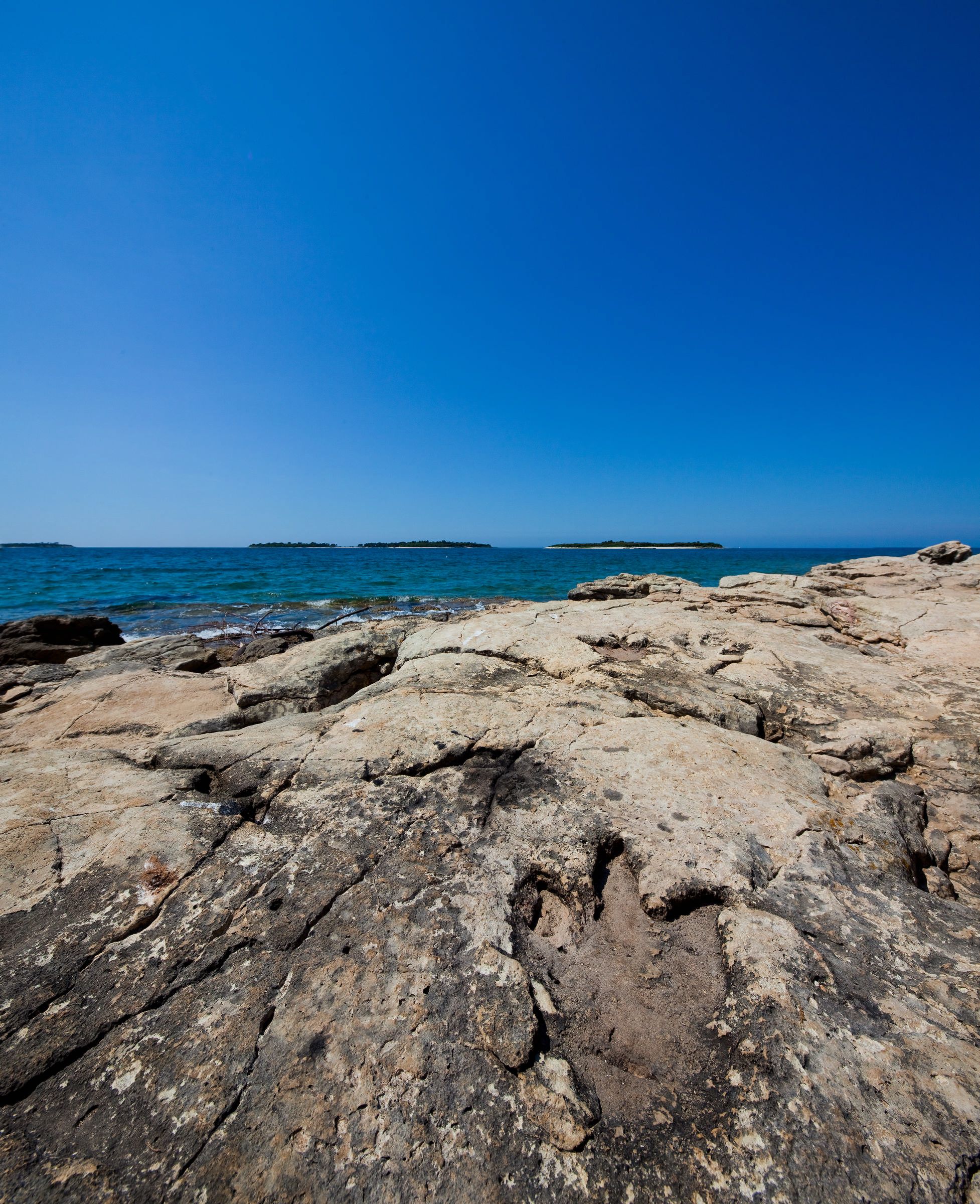
Dinosaur footprints on Brijuni / Copyright Romulić and Stojčić
Croatia's territory is part of the paleogeographic unit of the Adriatic-Dinaric carbonate platform. During the Jurassic and Cretaceous periods, sedimentation occurred on the carbonate platform, i.e., ecological conditions enabled the survival and development of dinosaurs.
Poor preservation
The dinosaur populations that inhabited these areas are specific in the morphology and dimensions of the fossil footprints and bones, which differ from the simultaneous findings from other parts of the world. Footprints suggest the presence of sauropod, theropod, and ornithopod dinosaurs.
Fossil footprints and bones have been preserved in Mesozoic limestone deposits. The oldest footprint finds date from the Upper Jurassic period and the youngest from the Upper Cretaceous. A total of 23 sites of dinosaur footprints have been discovered and investigated in Croatia, as well as one site with discovered petrified bones.
Finding dinosaur fossils in Croatia is possible, but the preservation of such finds is small. Therefore, all the findings found so far, but also possibly newly discovered dinosaur fossil finds, have a significant educational and scientific value. These remains are the only witnesses to dinosaurs' lives that can be used in the interpretation and education, and popularization of geo-heritage.
To read more news from Croatia, follow our dedicated page.
Legendary Formula 1 World Champion Jacques Villeneuve Visited Brijuni
April 6, 2021 – About 40,000 tourists vacationed in Croatia for the Easter holidays. Among them, the legendary Formula 1 world champion Jacques Villeneuve visited Brijuni National Park!
As the Brijuni National Park reported today, they had a special guest last weekend as the Canadian sports car driver, former world champion in Formula 1 Jacques Villeneuve stayed with his family in Istria for the Easter holidays.
Villeneuve and his family spent one day of their vacation in the Brijuni National Park, where they toured with expert guidance the natural and cultural-historical sights of the largest island of the Brijuni archipelago, Veliki Brijun.
Brijuni left a very positive impression on Villeneuve – the 1997 World Champion in Formula 1 with Williams Renault, winner of the 1995 Indianapolis 500, second in 24 Hours of Le Mans, namely the legend of motorsport.
As reported by the Brijuni National Park, Villeneuve was delighted with the many specialties of the archipelago. He especially liked the Boat House (Kuća za brodice) Education and Interpretation Center in the port of Brijuni. He also enjoyed the gastronomic delicacies of the Galija restaurant.
He praised the beauty of Istria, where he also visited the cities of Pula, Rovinj, and Motovun. Croatian Auto and Karting Association's president Davorin Štetner boasted on Facebook of dinner and wine with Jacques Villeneuve in Motovun, noting that such great world champions are thus promoting our country.
He also brought Villeneuve on the off-road track in the small Istrian settlement of Gambetići!
Villeneuve, who is currently driving for the NASCAR Whelen Euro Series, was supposed to come to Croatia back in November 2020 and drive the NASCAR GP on the Grobnik runway near Rijeka. However, although he didn't manage to visit Croatia last year due to his commitments in the Formula 1 race in Turkey, he enjoyed Croatia's tracks and beauty this year in Istria.
To read more news from Croatia, follow TCN's dedicated page.
PHOTOS: Now is the Time to Visit the Brijuni Islands
Saturday 11 September 2020 - With a trip to one of Croatia's most spectacular National Parks coming at half price in September, now is the time to visit the Brijuni islands!

A remarkable fish-shaped islet, part of the Brijuni islands © Croatian National Tourist Board
For a long time, beautiful Brijuni wasn't for the likes of you or me. Visit the Brijuni islands? I think not. The picturesque and peaceful collection of islands and islets were reserved for the select few. Once an exclusive beach resort catering only to the richest in Austro-Hungarian society, then the private summer residence of Tito, its stunning scenery and wonderful wildlife were off limits to most for close to 100 years.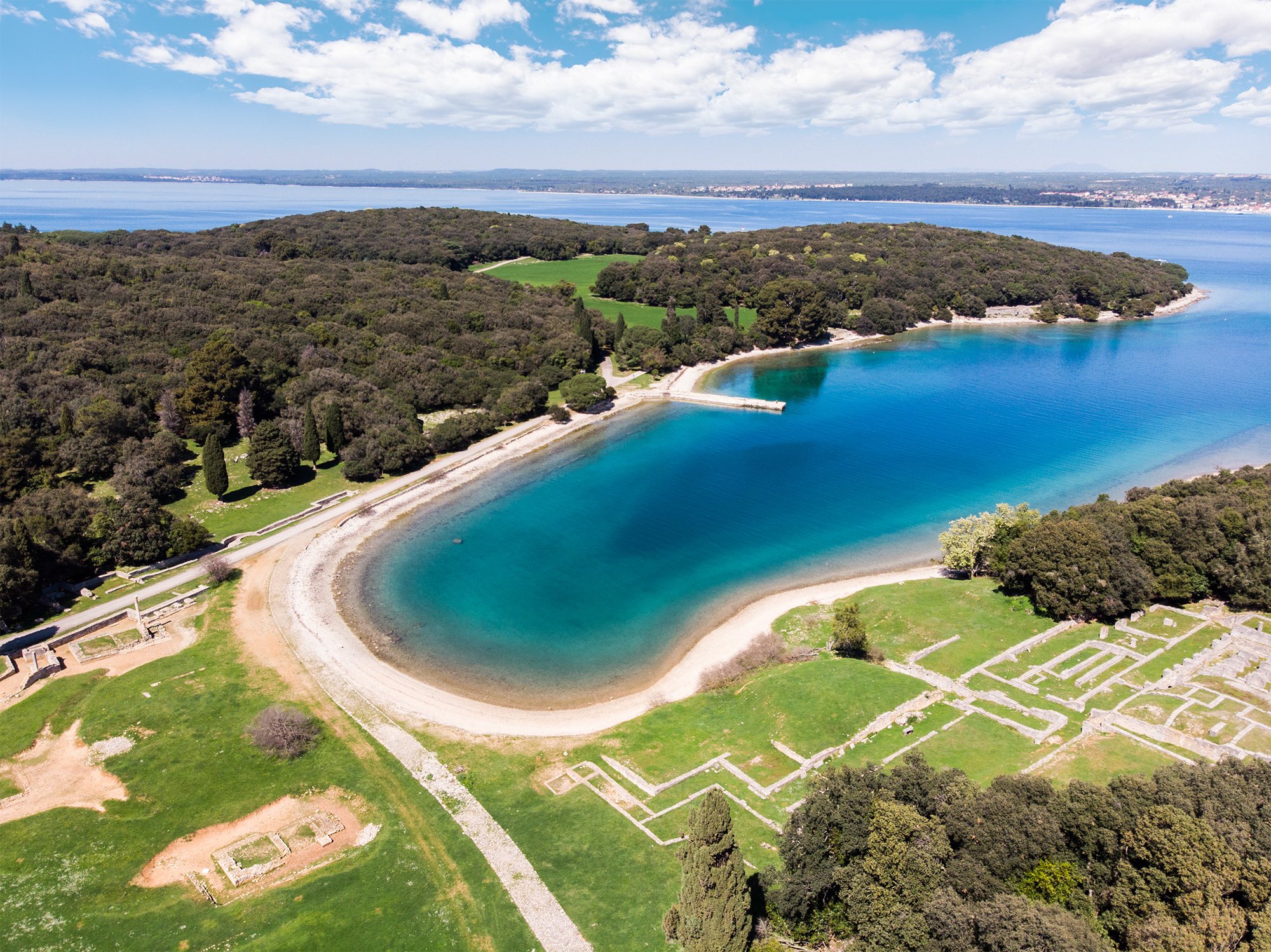
© np-brijuni.hr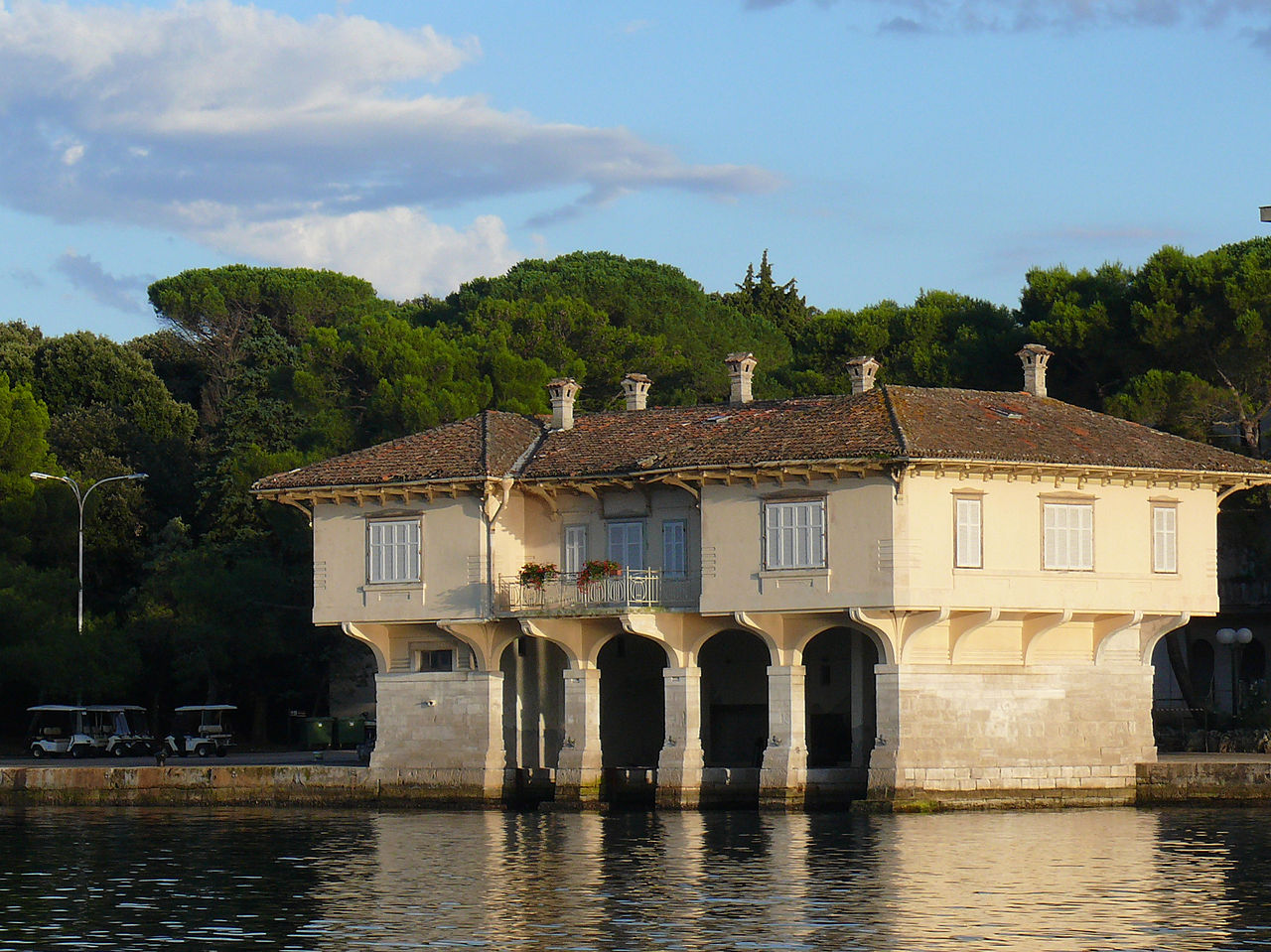
© Johann SUHM
These days, the Brijuni islands is a lot more accessible, although it maintains its exclusivity with a high cost of visiting independently by boat. However, the National Park runs daily boat services Fažana, just north of Pula. And with this all-inclusive boat trip coming at half price this September, there's never been a better time to visit the Brijuni islands.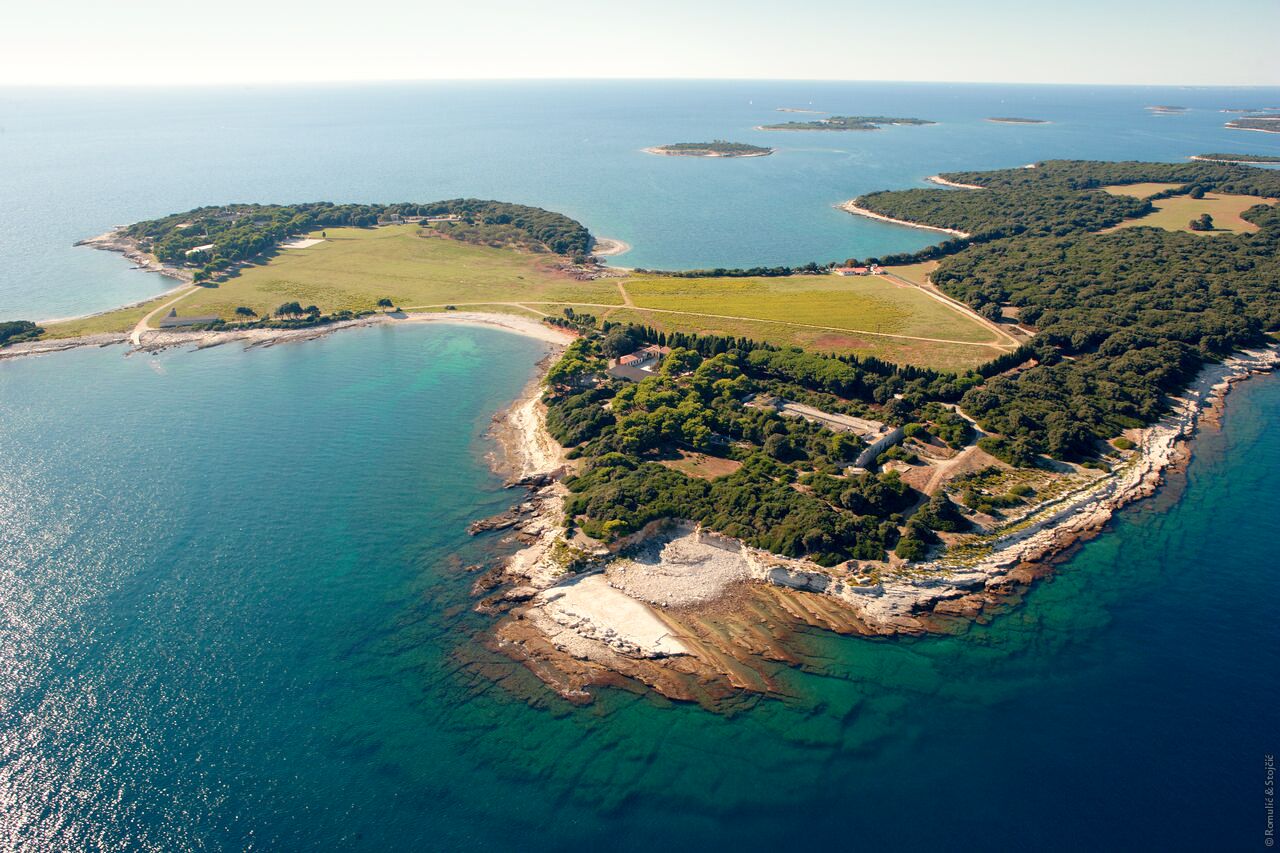
© Romulić & Stojčić
© Romulić & Stojčić
During this month, a trip to visit the Brijuni islands comes at th promotional price of 115 kuna for adults and 57.50 kuna for children (aged four to 14). The ticket price includes the return boat trip from Fažana, an expert guide, a tour of the island by tourist train, viewing the Natural History Collection, current photo exhibition 'Tito on Brijuni' and more.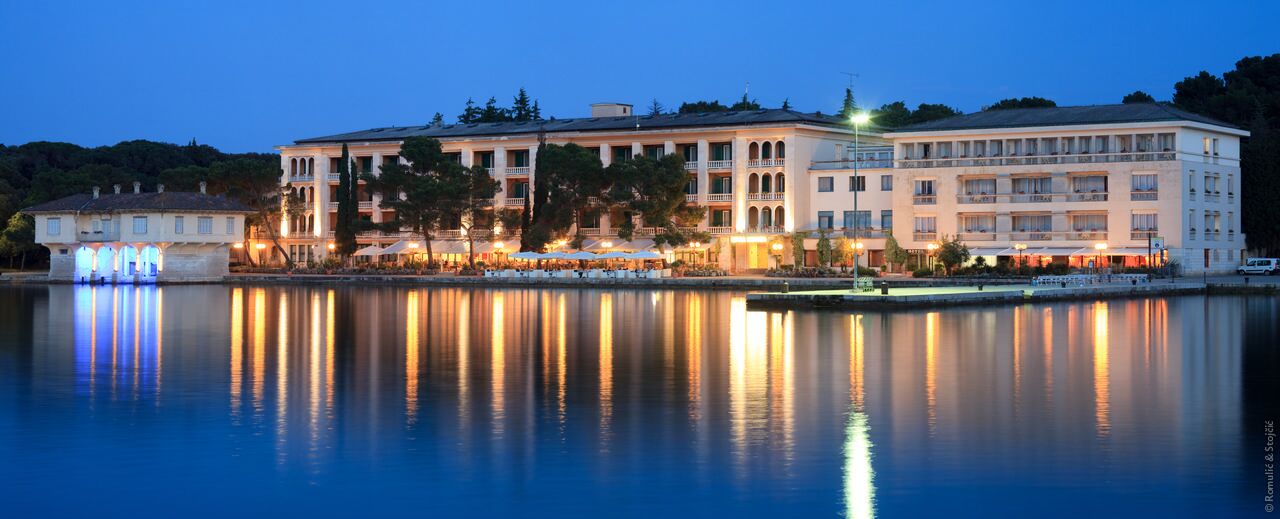
© Romulić & Stojčić
© Romulić & Stojčić
You can wander through the Brijuni Mediterranean garden or marvel at copies of frescoes and Glagolitic scripts at the exhibition in the 15th-century church of St. German. Or, you can just peel off and do your own thing.
© Neven Prasnikar
© Neven Prasnikar
The discount visit the Brijuni islands is available every day throughout September with departures of the ship from Fažana taking place at 10am, 11.30am and 1.30pm.
The islands are famous for their nature. As well as larger residents, there are almost 700 plant species and about 250 bird species on the islands © np-brijuni.hr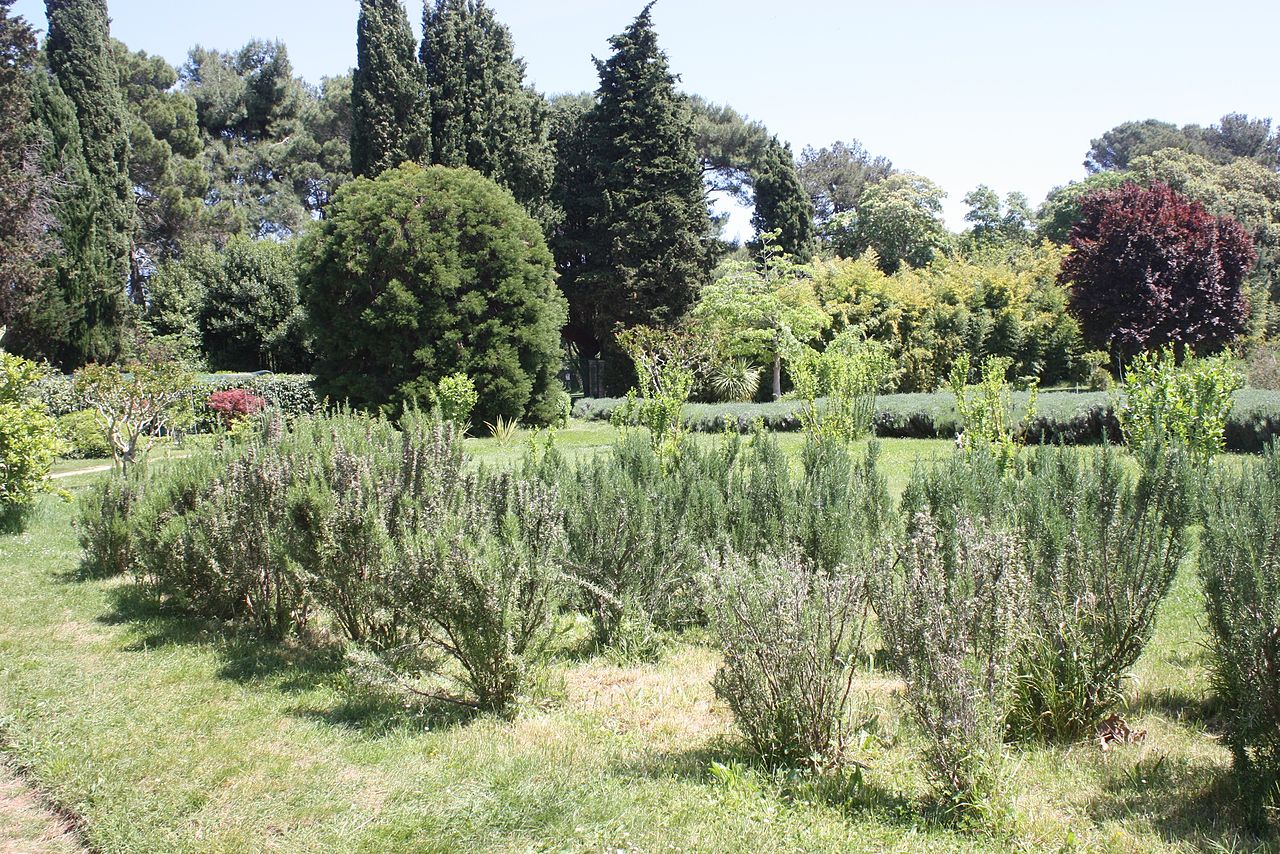
© Dguendel
Look out for special weekend activities also planned for this month and which will be part of any boat visit - on September 19th and 20th, you and the family can meet the elephant Lanka. On September 26th and 27th, a detailed guided tour of the Brijuni Mediterranean Garden will take place when you can learn about the secret life of plants and insects.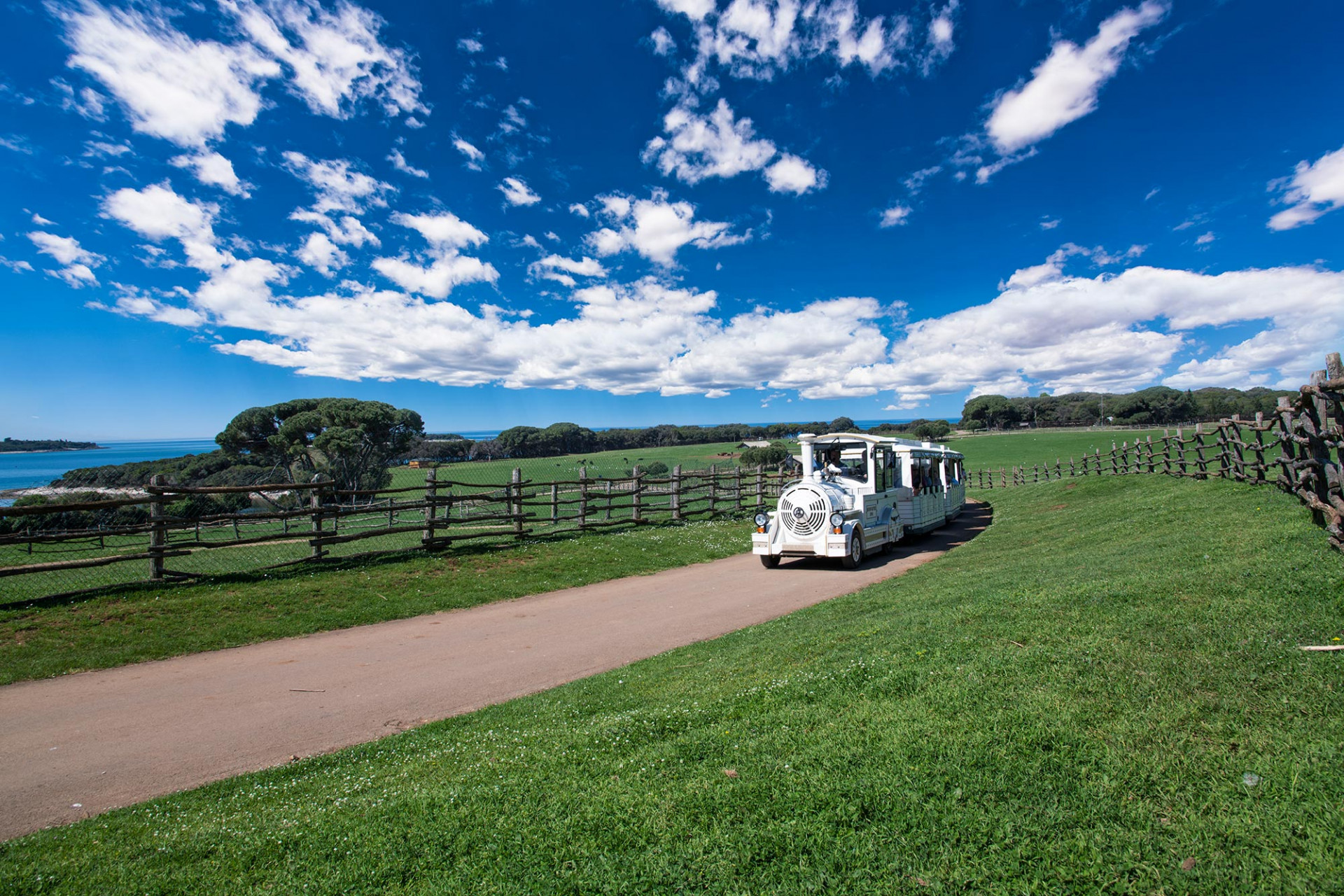
A tourist train takes visitors around the island's safari park © np-brijuni.hr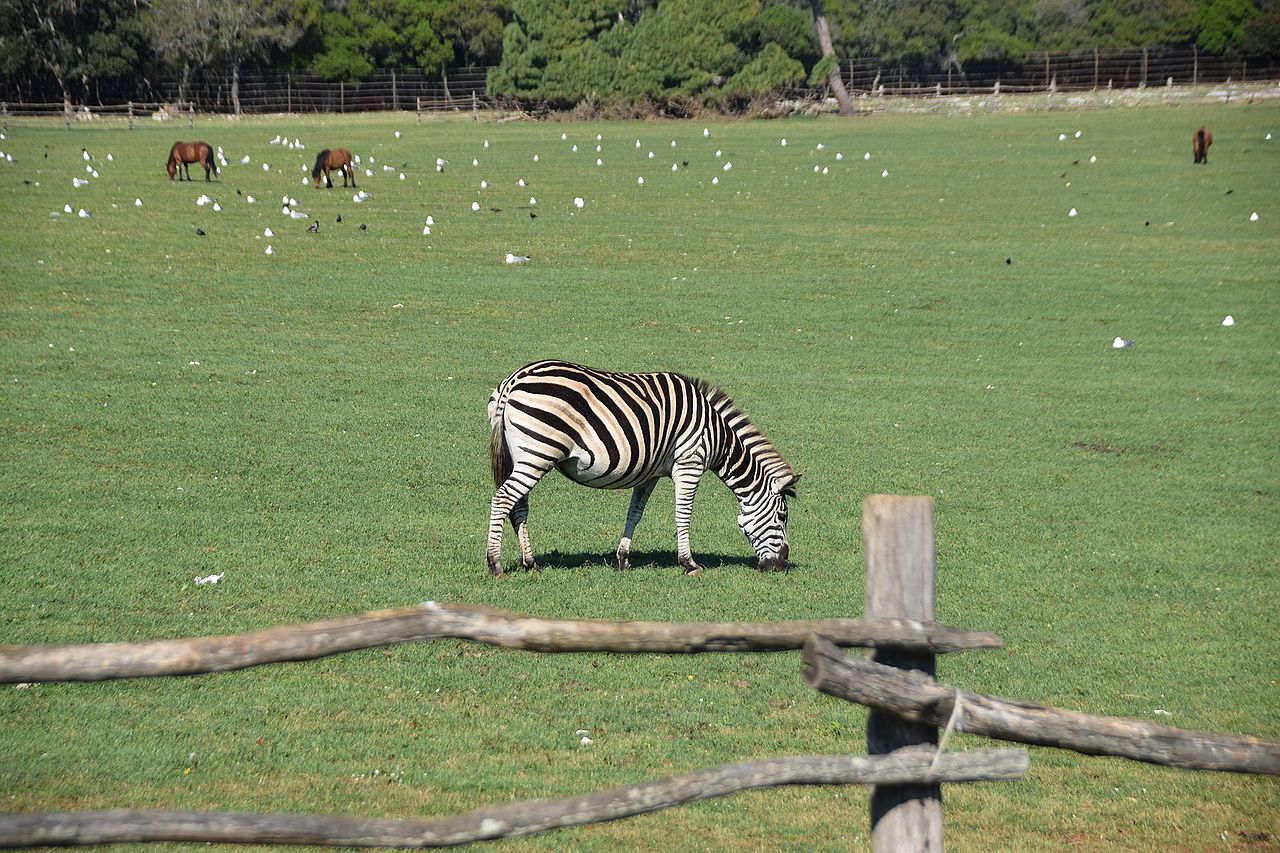
© Logica olgica
Due to the epidemiological situation, masks are mandatory in all indoor areas of the National Park. Although for any outdoor activities on this visit the Brijuni islands, they are not insisted upon.
© np-brijuni.hr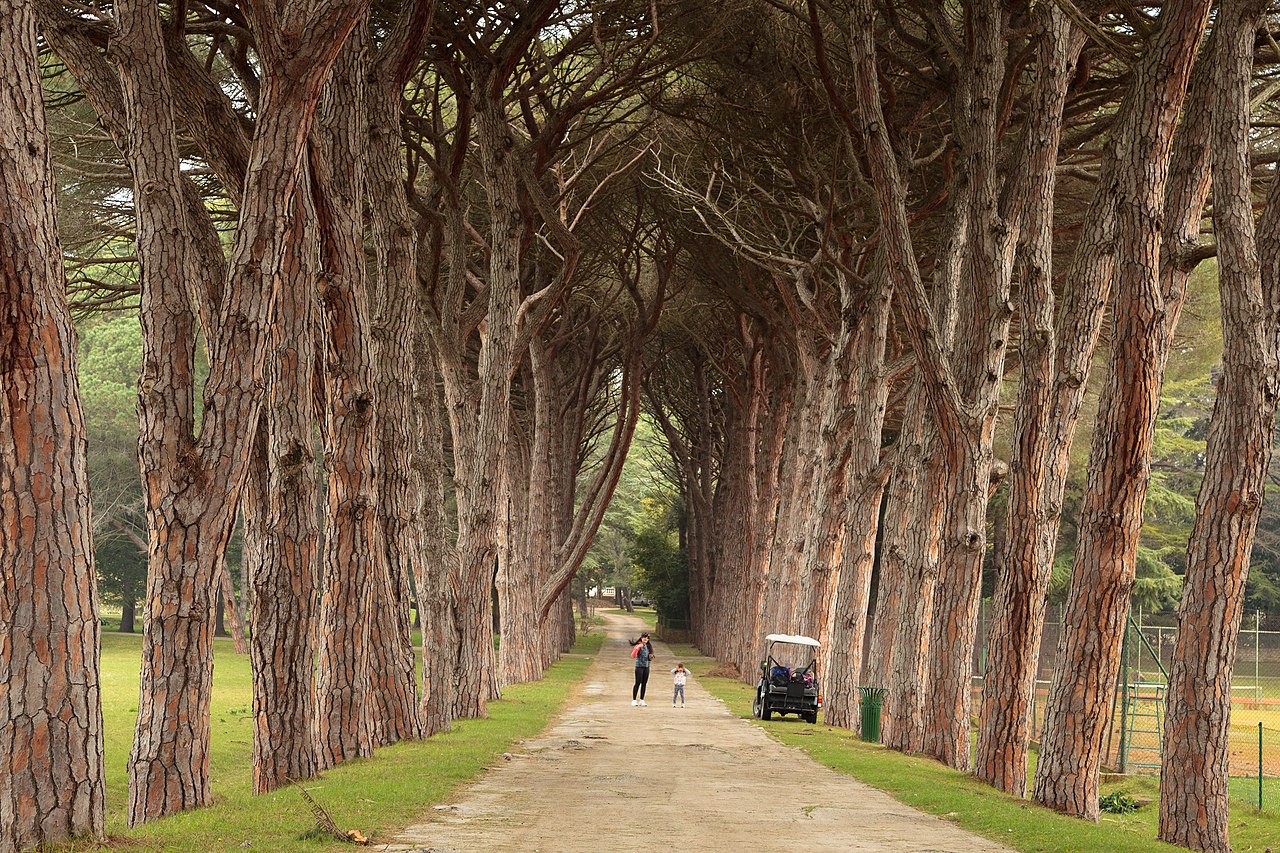
© David Lukšić
For the latest travel info, bookmark our main travel info article, which is updated daily.
Read the Croatian Travel Update in your language - now available in 24 languages
Brijuni Islands National Park: Tito's Former Summer Residence Gets Upgrade
The Brijuni islands, once the private summer residence for Josip Broz Tito, longtime president of former Yugoslavia, is getting a long-awaited renovation. A new catamaran will allow access to both islands for the first time and dormitories are being updated for education and research projects.
According to Barbara Ban/Novac/Jutarnji List on December 29,2019; Tito’s legendary cinema is also getting a facelift and tourist facilities are undergoing upgrades. Those upgrades include a new information center and an updated Natural History Exhibition. Trains will allow tourists with disabilities to see all of Veliki Brijun, the larger of the two islands.
Recently, a contract to build an aluminum catamaran for the Brijuni islands was signed at Tehnomont Shipyard in Pula. It is a 15.5 million HRK (2.1 million EUR) investment, and this ship will be able to transport visitors to Mali Brijun, the smaller of the two islands, for the first time. Sveti Nikola Bay on Mali Brijun has a jetty dating back to the Austro-Hungarian Empire, which was so shallow that the previous excursion boat couldn’t dock there. Therefore, Mali Brijun has been largely neglected, since visitors could only reach it as part of an organized group and smaller boat. On Mali Brijun they could see a performance at the Ulysses Theater. This will be now be possible on a regular basis, and the ship should be finished in 18 months, which means that the Brijuni islands will offer more tourism opportunities when the 2021 season begins.
Ulysses Theater on Mali Brijun
Biggest Brijuni Islands Investment in Over a Decade
But this is only a part of a larger plan, and the largest investment on the Brijuni islands in the last decade, and beyond. It’s worth pointing out that billions are not involved, considering that big numbers are often mentioned when it comes to investing in these interesting islands. Recall that not long ago there was a plan to completely renovate the hotels and villas and add facilities and accommodations. It would have been a 250 million EUR investment, and the names of well-known worldwide luxury chains were being mentioned to run these hotels and attract the elite back to the islands, as they had done back in the 1920s and 1930s. Very little remains of that elite past and the islands still await the government’s next move. But governments and ministers with big plans have changed as the years have passed. Now the future of the Brijuni islands is no longer on hold.
In any case, opportunities to finance projects are being taken advantage of wherever they arise, and one of those is the Novo ruho Brijuna (New Brijuni Outfit) project which is worth 41 million HRK (5.5 million EUR). This project is being funded by the European Regional Development Fund. Ten percent of the funding is coming from the Environmental and Energy Efficiency Fund, and the rest from public institutions. This is a small sum when compared to more ambitious investment proposals, but it is noteworthy and will provide more tourism opportunities for the only national park on the Istrian peninsula. Finally, Mali Brijun will be available to a wider group of visitors, and that’s where the largest construction project is being planned.
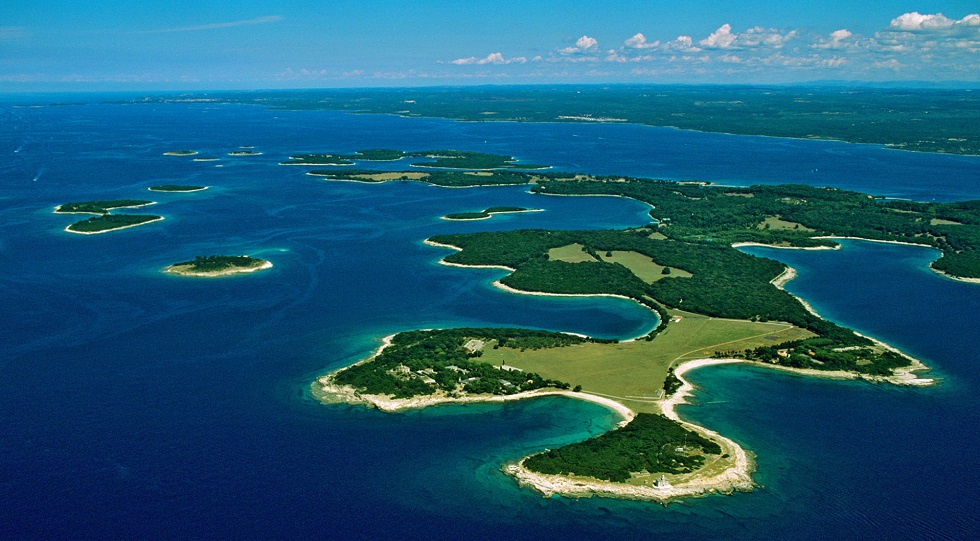
Dormitories Renovated for Research and Education
“We plan to renovate seven facilities next year. These are former military dormitories at Sveti Nikola Bay. They will be updated and returned to their original use. The dormitories won’t house the military, but are intended for nature schools, for scientists, divers, researchers and even artists. Therefore, the purpose of these dormitories is to serve these groups who conduct their summer activities at the island. The updated dormitories will have about 70 rooms with bunk beds. They will be simple buildings with sanitary facilities. Some rooms will have their own bathrooms, and some will be equipped with common bathrooms,” says Masa Mihelić, who runs this European project on Brijuni National Park, and hopes that after this project there will be many others which will increase the tourist capacity on the island.
She also points out that the kitchens will be arranged among the seven facilities to serve guests’ needs. One kitchen will be used at the information center and another will be for other facilities, such as laundry and storage. Mihelić emphasizes that these new accommodations in Brijuni are not intended for the typical commercial tourist who might otherwise visit Veliki Brijun.
“We are placing emphasis on the educational research and cultural importance of this project. Larger groups will always be accommodated here, so the facilities cannot be used for individual purposes,” she explains.
Most of these facilities are not being used now and are in rather poor condition. One facility currently has a janitor, and another stores firefighter equipment. These investments will make this section of the national park come back to life. However, although construction has already begun and was expected to be finished by the start of this season; it has not gone as smoothly as planned, unfortunately. The completion of project had to be extended to 2021, Mihelić points out.
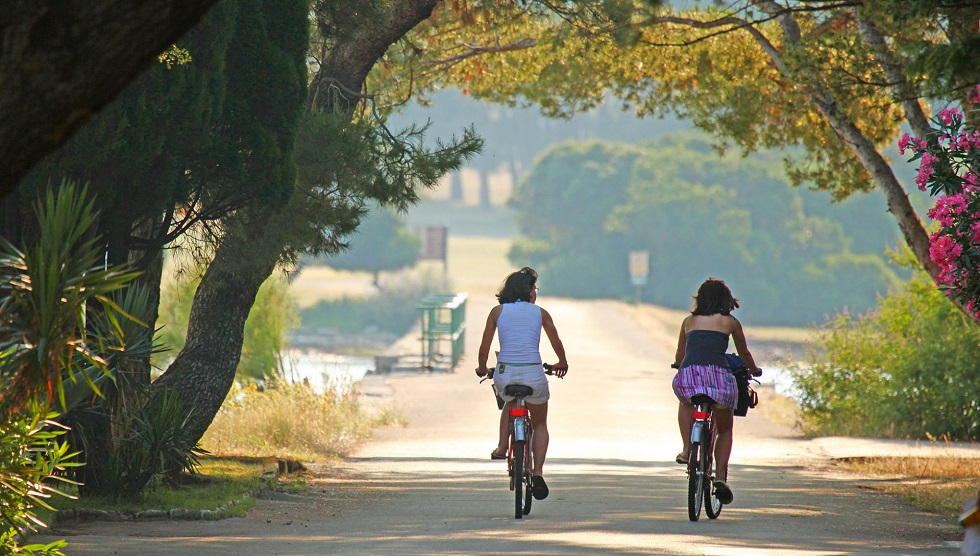
Mali Brijun Project Completion Postponed to 2021
“The project should have been completed by April 2020, but this will not be possible because of unforeseen circumstances. The pier on Mali Brijun collapsed and needed to be repaired. That became a multi-million EUR project, and our institution had to focus all its resources to address this issue. The rehabilitation of the facilities can begin only after this construction is completed,” Mihelić explains.
Their most significant accomplishment was choosing a contractor for the 150-passenger boat. One hundred of those seats will be inside the boat and accessible to people with disabilities.
New Catamaran Will Access Both Islands
“This boat will allow us to reach Veliki Brijun and Mali Brijun from Fažana. At the same time, the ship’s route will connect both islands. Then we will be able to organize a full day trip to Veliki and Mali Brijun. There will also be an option to go directly to Mali Brijun. Presently, it is only possible to visit that island as part of a special tour, but those had to be booked with advance notice and smaller groups. Special transport had to be used, which is why the trip was so expensive. This project will open the island to the general public and make the trip available to a wider audience,” points out Mihelić, who is the head of the largest EU project ever conducted on the Brijuni islands.
Veliki Brijun Renovation on Schedule
But no matter how far that project has fallen behind schedule, the rest of the renovation is being carried out according to plan. Therefore, by the end of this season, an information center had already been set up in Veliki Brijun, with an interactive screen presenting all the islands’ attractions. Two modern trains were purchased to transport tourists, and these allow people in wheelchairs to sightsee the island for the first time. The well-known Natural History Exhibition has been modernized and several new acquisitions are underway, as this is a complex project which will provide numerous new educational and tourist facilities. Tito's Summer Cinema will also get a new face.
Tito’s Cinema Gets Facelift
“It is a legendary cinema where Tito watched all the films which came to the Pula Film Festival, before their official screening. This space will be able to be used by cultural anthropologists when it is renovated and will feature long and short films on nature. So far, we have purchased 300 video clips from the archives of the former (Yugoslav) state in Belgrade which show the Brijuni islands from the 1950s to the 1980s. All of these films will be shown at the summer cinema,” the project manager points out.
Elizabeth Taylor and Richard Burton visit Tito on Brijuni Islands
And that's not everything. As part of the trip, the Brijuni islands will offer more than just a train ride and a visit to a safari park. That's why they are also designing 11 new attractions including promenades, stone stories, and educational trails.
For more information on tourist destinations and developments in Croatia, follow our Travel page. Check out the Brijuni Islands National Park website here, YouTube page here, and Instagram page here for more information and reservations.
2014 Best Croatian Promotional Film | Zagreb TourFilm Festival | Croatia
Resort, Luxury Lifestyle Destination or Park? Unclear Future for Brijuni
As yet, there is still no consensus as to whether beautiful Brijuni will be a luxurious lifestyle destination, or some sort of mix between a national park and a resort.
Hotel Istra on Brijuni Islands Now Open!
Thinking of a weekend getaway in March? Here's an idea: a visit to a beautiful national park which doubles as a short holiday on the Adriatic
Sailing the Croatian National Parks: Brijuni
We’ve recently started a new series of articles called Sailing the Croatian National Parks, which aims to provide you with all the necessary information as well as inspiration for exploring the beautiful Croatian coast


